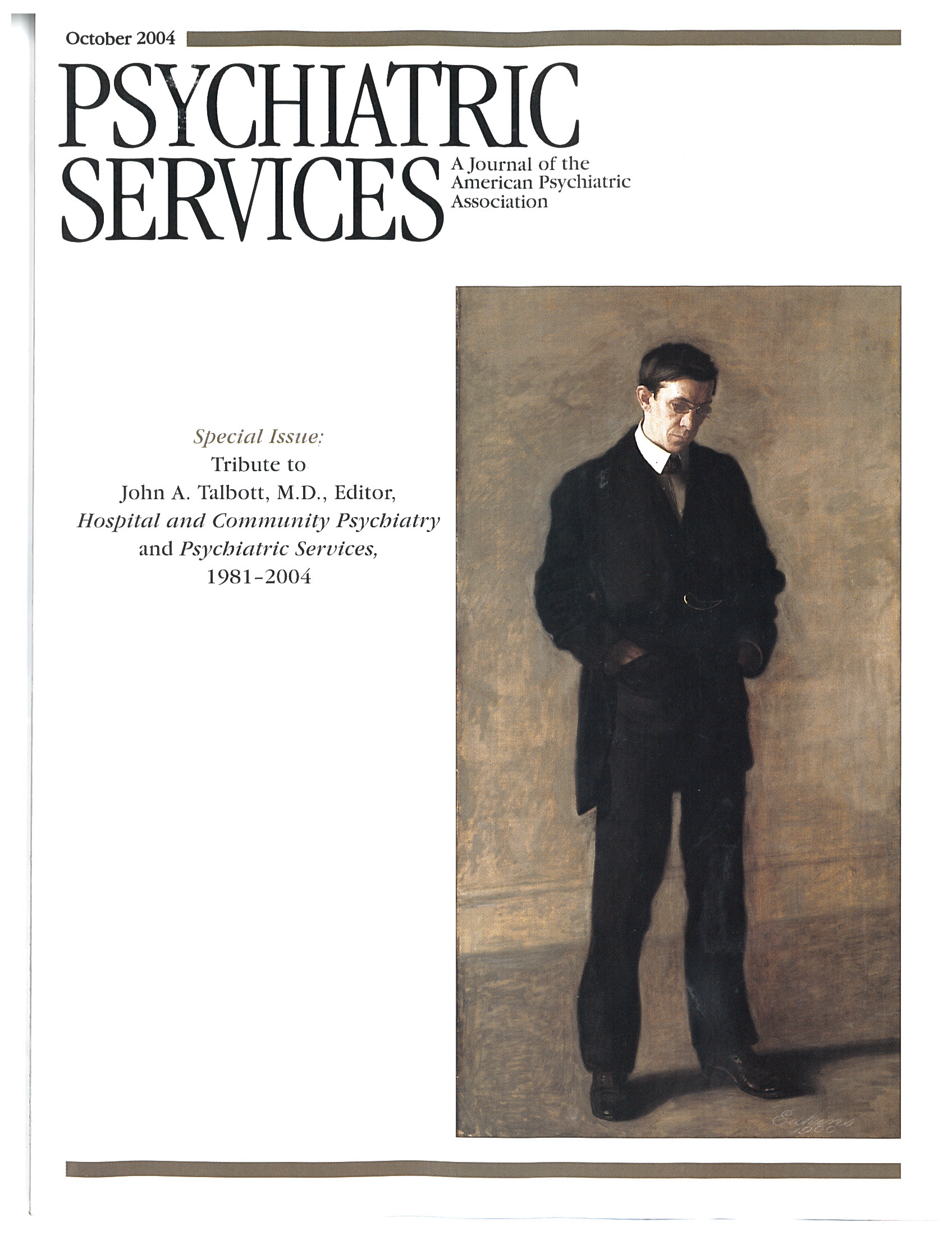Psychiatric Administration: A Comprehensive Text for the Clinician-Executive
A book review usually consists of an outside and objective opinion of the text in question. In this review I of course try my very best to provide an objective and outside perspective on Psychiatric Administration: A Comprehensive Text for the Clinician-Executive. However, I also provide an inside perspective, for I was not only a contributor to this text but also a close colleague, friend, and professional partner to both of its editors, John A. Talbott. M.D., and Seymour R. Kaplan, M.D. This occasion is a special one and should be handled as such.
I had the distinction and privilege of serving twice on the editorial board of Psychiatric Services during Dr. Talbott's tenure, first from 1981 to 1987 and again from 2001 to the present time. Thus I witnessed all along Dr. Talbott's exemplary leadership as editor of this journal and the evolution of Psychiatric Services into one of the best journals in the field of psychiatry in the United States and abroad.
Psychiatric Administration: A Comprehensive Text for the Clinician-Executive was published during a period in which the field of psychiatry demanded such a text. After World War II, psychiatry expanded its boundaries to an extent never experienced before. All of a sudden and at a worldwide level, society realized that psychiatric illness could affect anyone and that it had no limits with respect to race, ethnicity, culture, or socioeconomic status, as was clearly demonstrated during the World War II period. In addition, during the early 1960s, under President Kennedy's leadership, the fields of psychiatry and mental health were given priority, relevance, and conceptualization that had not been seen during the history of mankind, anywhere in the world. The fact that the federal government attempted to reach all mentally ill people and to provide them with comprehensive mental health care at a community level was unparalleled. New programs were created and new services were expanded, including primary prevention services. Unfortunately, this dream never fully materialized.
Two additional events happened during this period. One was the attempt to dehospitalize or deinstitutionalize the mentally ill and to provide humane care for these individuals at a community level. Unfortunately, society failed to respond to this exceptional challenge, with the result that thousands of persons with mental illness became homeless or inhumanely incarcerated. The other event was the focus and attention given to the training, education, and certification in administrative psychiatry, which reached its highest peak ever.
In view of these events, the field of psychiatry experienced a large expansion in the administration and management of these mental health programs, thus making the need for a textbook such as Psychiatric Administration a reality. Needless to say, Talbott and Kaplan were pioneers and genuine leaders in this respect. They not only perceived the need for such a text but also accepted responsibility for producing it. They gathered the best experts in the field of administrative psychiatry, and this book became a reality. After the book's publication, the era of managed care evolved, and this textbook became a necessity. The vision and pioneering of Talbott and Kaplan were exceptional—countless physicians and psychiatrists have taken administrative and managerial courses during the past two decades to meet the current realities of the profession. Thus this textbook is even more relevant today than it was when it was first published.
The text has six areas of focus, each covered in depth: historical and organizational perspective; psychiatric services; organizational and administrative theory; leadership and training; facility management, budget, and finance; and the law and psychiatry. Talbott and Kaplan, as well as the book's 33 contributors, symbolize the best that the field of administrative psychiatry could offer. Talbott and Kaplan knew then that psychiatrists' new role as clinical executives was around the corner. Today's realities clearly demonstrate their fortitude and vision in this regard. This volume not only covers the most relevant areas of the field of psychiatry but also represents a vision of the role and function of forensic psychiatry long before it became what it is today.
Some books in the field of administrative psychiatry preceded Psychiatric Administration; however, none has been as relevant or as visionary nor has over time transcended the field as this book has done. This book has become a classic text in the field of psychiatry and certainly will continue to be one for years to come. I am not concerned with being somewhat subjective in writing this book review, because this textbook speaks for itself.
This book and Psychiatric Services are two jewels in the field of psychiatry. I give my thanks and my salute to Dr. Talbott and the late Dr. Kaplan for having guided us so well as "clinician-executives" and for having provided us with a visionary view of the field of administrative psychiatry.
Dr. Ruiz is professor and vice-chair in the department of psychiatry and behavioral sciences of the University of Texas Medical School in Houston.



